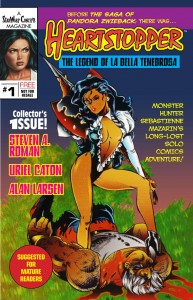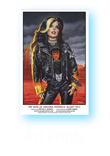Tonight is Game 1 of the
2015 World Series of baseball, in which the National League Champions, the
New York Mets, battle the American League Champions, the
Kansas City Royals, in a best-of-7 series. And that’s caused a bit of tension here at ’Warp Central, between die-hard Mets fan
Pandora Zwieback, the teenaged Goth adventuress who stars in my Saga of Pandora Zwieback novels and comics, and
Nightstalker, the lycanthropic member of the supernatural superhero team Troubleshooters, Incorporated!
Now, being a werewolf who’s trying to make a living, Nightstalker (real name Alex Johnson) hasn’t really shown much interest in being a baseball fan, but when he realized that his co-creator, Richard C. White (author of the recent Terra Incognito: A Guide to Building the Worlds of Your Imagination), is a Royals fan, he immediately threw on a KC shirt so that Maryland-based Rich would have some representation in SWC’s New York offices. That, as one would expect, hasn’t been well received by Pan and her best friend, Sheena McCarthy…
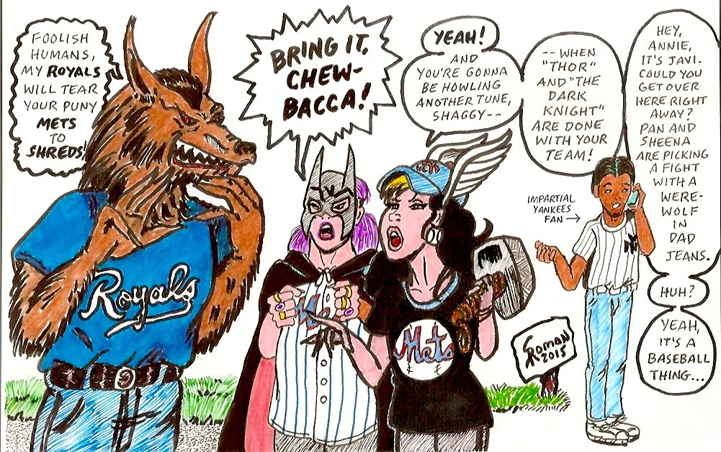
How will it end? Only the Mets and Royals can determine that outcome. Of course, since we at ’Warp Central are all Mets fans, like Pan, we’re pulling for the home team. But we wish Rich and the Royals all the best.
Riiiight…
Oh, and in case you’re unfamiliar with the participants in this major league rivalry:
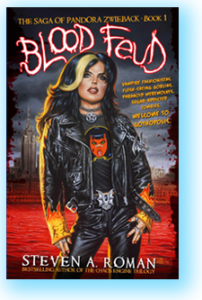 The Saga of Pandora Zwieback is about a 16-year-old Goth girl who’s spent the last decade being treated for mental health problems because she can see monsters. It’s only after she meets an immortal, shape-shifting mopnster hunter named Sebastienne “Annie” Mazarin that Pan discovers she’s never been ill—her so-called “monstervision” is actually a supernatural gift that allows her to see into Gothopolis, the not-so-mythical shadow world that exists right alongside the human world. You’ll find Pan and Annie battling evil in the following titles:
The Saga of Pandora Zwieback is about a 16-year-old Goth girl who’s spent the last decade being treated for mental health problems because she can see monsters. It’s only after she meets an immortal, shape-shifting mopnster hunter named Sebastienne “Annie” Mazarin that Pan discovers she’s never been ill—her so-called “monstervision” is actually a supernatural gift that allows her to see into Gothopolis, the not-so-mythical shadow world that exists right alongside the human world. You’ll find Pan and Annie battling evil in the following titles:
The Saga of Pandora Zwieback #0: A free, downloadable comic that serves as an introduction to Pan and Annie—with an 8-page story written by me and illustrated by Eliseu Gouveia—as well as Pan’s first novel, Blood Feud (via a pair of preview chapters).
Blood Feud: The Saga of Pandora Zwieback, Book 1: This critically acclaimed novel is the beginning of Pan’s story, explaining how she, her parents and friends, and Annie are drawn into a conflict among warring vampire clans searching for the key to an ultimate weapon (or so the legend goes)—a key that just so happens to have been delivered to the horror-themed museum owned by Pan’s father. It’s a character-driven action-fest that leads immediately into the second novel:
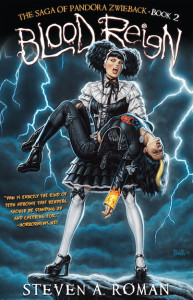 Blood Reign: The Saga of Pandora Zwieback, Book 2: Pan and Annie face even greater challenges as the vampire clans draw up plans to go to war with humanity. Leading the charge is a fallen angel named Zaqiel, whose previous attempt at subjugating the world was stopped by Annie—who, back in the day, was Zaqiel’s lover!
Blood Reign: The Saga of Pandora Zwieback, Book 2: Pan and Annie face even greater challenges as the vampire clans draw up plans to go to war with humanity. Leading the charge is a fallen angel named Zaqiel, whose previous attempt at subjugating the world was stopped by Annie—who, back in the day, was Zaqiel’s lover!
The Saga of Pandora Zwieback Annual #1: A spinoff from the novel series, this 56-page, full-color comic special finds the teenaged Goth adventuress battling vampires and a jealous, man-stealing siren. It features stories by me and Sholly Fisch (Scooby-Doo Team-Up), art by Eliseu Gouveia (The Saga of Pandora Zwieback #0), comic-art legend Ernie Colon (Amethyst, Princess of Gemworld), and Elizabeth Watasin (Charm School), and cover art by award-winning artist Henar Torinos (Mala Estrella).
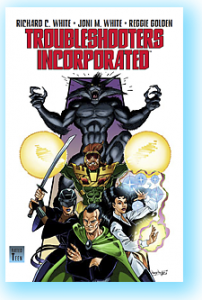 Troubleshooters, Incorporated: Night Stalkings is a general readers’ graphic novel about a group of supernatural-superheroes-for-hire taking on their first case. The team consists of a wizard, a female ninja, a sorceress, the werewolf Nightstalker, and a rock ’n’ roll lighting designer wearing high-tech armor. Sure, they might not be on a power level with the Avengers or Justice League of America—they’re more like superpowered Ghostbusters—but they get the job done. The graphic novel is written by Rich and his wife, Joni M. White, and illustrated by Reggie Golden and Randy Zimmerman.
Troubleshooters, Incorporated: Night Stalkings is a general readers’ graphic novel about a group of supernatural-superheroes-for-hire taking on their first case. The team consists of a wizard, a female ninja, a sorceress, the werewolf Nightstalker, and a rock ’n’ roll lighting designer wearing high-tech armor. Sure, they might not be on a power level with the Avengers or Justice League of America—they’re more like superpowered Ghostbusters—but they get the job done. The graphic novel is written by Rich and his wife, Joni M. White, and illustrated by Reggie Golden and Randy Zimmerman.
Blood Feud, Blood Reign, the Pan Annual, and Troubleshooters, Incorporated: Night Stalkings are available in print and digital formats. Pandora Zwieback #0 is a digital exclusive. Visit their respective product pages for ordering information, as well as sample pages and chapters.
Let’s go, Mets! (And Royals, too, of course.)
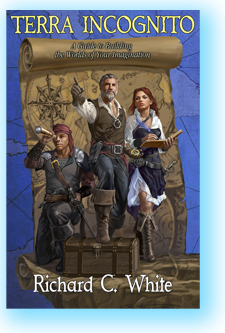 The hits just keep on coming for Terra Incognito: A Guide to Building the Worlds of Your Imagination, SWC’s first how-to book on the particulars needed to create detailed fantasy worlds. As of this writing it sits atop e-book distributor DriveThru Fiction’s charts as the #1 Hottest Nonfiction Book and the #1 Hottest How-To for Writers! Congrtulations, Rich!
The hits just keep on coming for Terra Incognito: A Guide to Building the Worlds of Your Imagination, SWC’s first how-to book on the particulars needed to create detailed fantasy worlds. As of this writing it sits atop e-book distributor DriveThru Fiction’s charts as the #1 Hottest Nonfiction Book and the #1 Hottest How-To for Writers! Congrtulations, Rich!

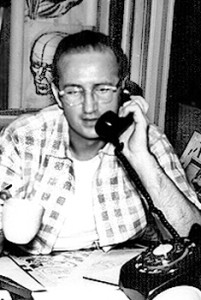 He’s one of the founding fathers of modern superhero comics—along with giants like Jack Kirby, John Buscema, and Wally Wood—but he’s also an extremely private, fairly reclusive man who’s been referred to as the J. D. Salinger of comics. Today,
He’s one of the founding fathers of modern superhero comics—along with giants like Jack Kirby, John Buscema, and Wally Wood—but he’s also an extremely private, fairly reclusive man who’s been referred to as the J. D. Salinger of comics. Today, 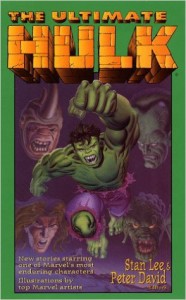 One selection was “Transformations,” by Will Murray. Set in the Hulk’s early days, it involved a run-in with Magneto, the X-Men’s number one super-villain.
One selection was “Transformations,” by Will Murray. Set in the Hulk’s early days, it involved a run-in with Magneto, the X-Men’s number one super-villain.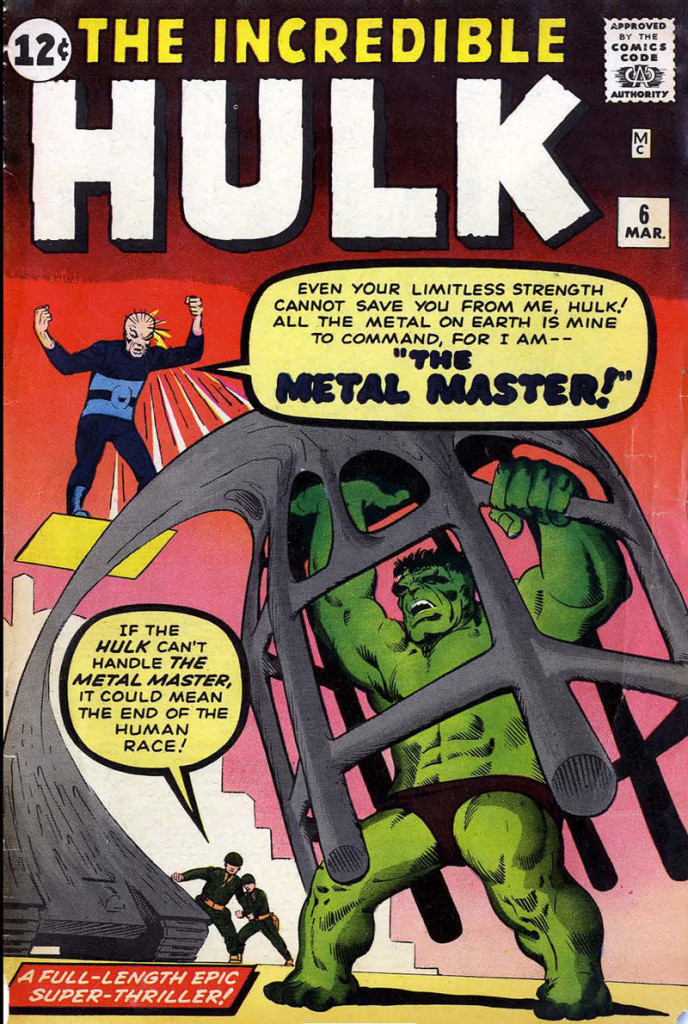 Of course I said yes to Murray, but with reservations. I knew that, at the time, Ditko and Marvel had been working together on various projects, so there’d be no problem in getting him approved by the licensing division, but Ditko also had a reputation of being touchy about drawing characters from his Marvel past—he’d flat-out refused to ever again draw Spider-Man and Doctor Strange after his initial falling out with Marvel decades earlier, and nothing would change his mind. (His stance has remained unchanged up to the present day, by the way.)
Of course I said yes to Murray, but with reservations. I knew that, at the time, Ditko and Marvel had been working together on various projects, so there’d be no problem in getting him approved by the licensing division, but Ditko also had a reputation of being touchy about drawing characters from his Marvel past—he’d flat-out refused to ever again draw Spider-Man and Doctor Strange after his initial falling out with Marvel decades earlier, and nothing would change his mind. (His stance has remained unchanged up to the present day, by the way.)
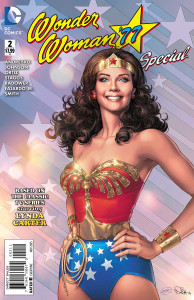 As some of you may be aware, when I’m not running things here at ’Warp Central, I can be found over at the news site
As some of you may be aware, when I’m not running things here at ’Warp Central, I can be found over at the news site 
 The Saga of Pandora Zwieback
The Saga of Pandora Zwieback

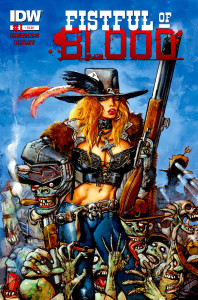 Over at the news site Comics for Sinners, you’ll find my review of
Over at the news site Comics for Sinners, you’ll find my review of 
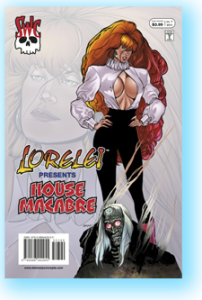
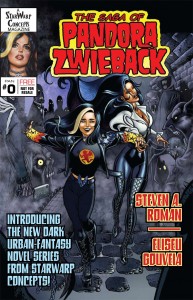 Her name is Sebastienne “Annie” Mazarin, and for more than four hundred years she’s been going toe-to-toe with some of the Big Apple’s baddest monsters this side of Pitch Black! These days, Annie acts as mentor to teenaged Goth adventuress Pandora Zwieback in my young adult novel series The Saga of Pandora Zwieback. Pan is a 16-year-old Goth girl who’s spent the last decade being treated for mental health problems because she can see monsters. It’s only after she meets Annie that Pan discovers she’s never been ill—her so-called “monstervision” is actually a supernatural gift that allows her to see into Gothopolis, the not-so-mythical shadow world that exists right alongside the human world. You’ll find Annie battling evil with Pan’s help in the following titles:
Her name is Sebastienne “Annie” Mazarin, and for more than four hundred years she’s been going toe-to-toe with some of the Big Apple’s baddest monsters this side of Pitch Black! These days, Annie acts as mentor to teenaged Goth adventuress Pandora Zwieback in my young adult novel series The Saga of Pandora Zwieback. Pan is a 16-year-old Goth girl who’s spent the last decade being treated for mental health problems because she can see monsters. It’s only after she meets Annie that Pan discovers she’s never been ill—her so-called “monstervision” is actually a supernatural gift that allows her to see into Gothopolis, the not-so-mythical shadow world that exists right alongside the human world. You’ll find Annie battling evil with Pan’s help in the following titles: